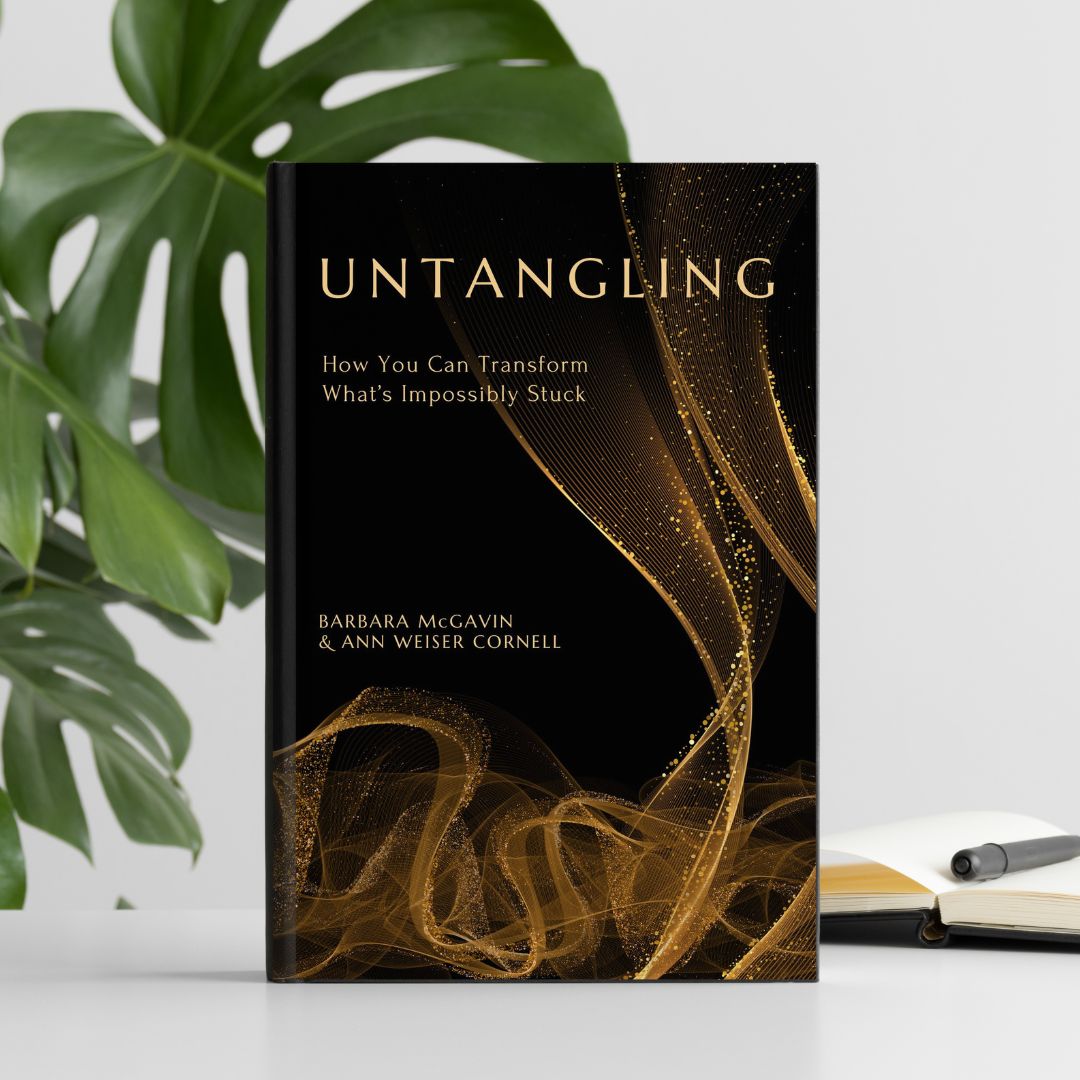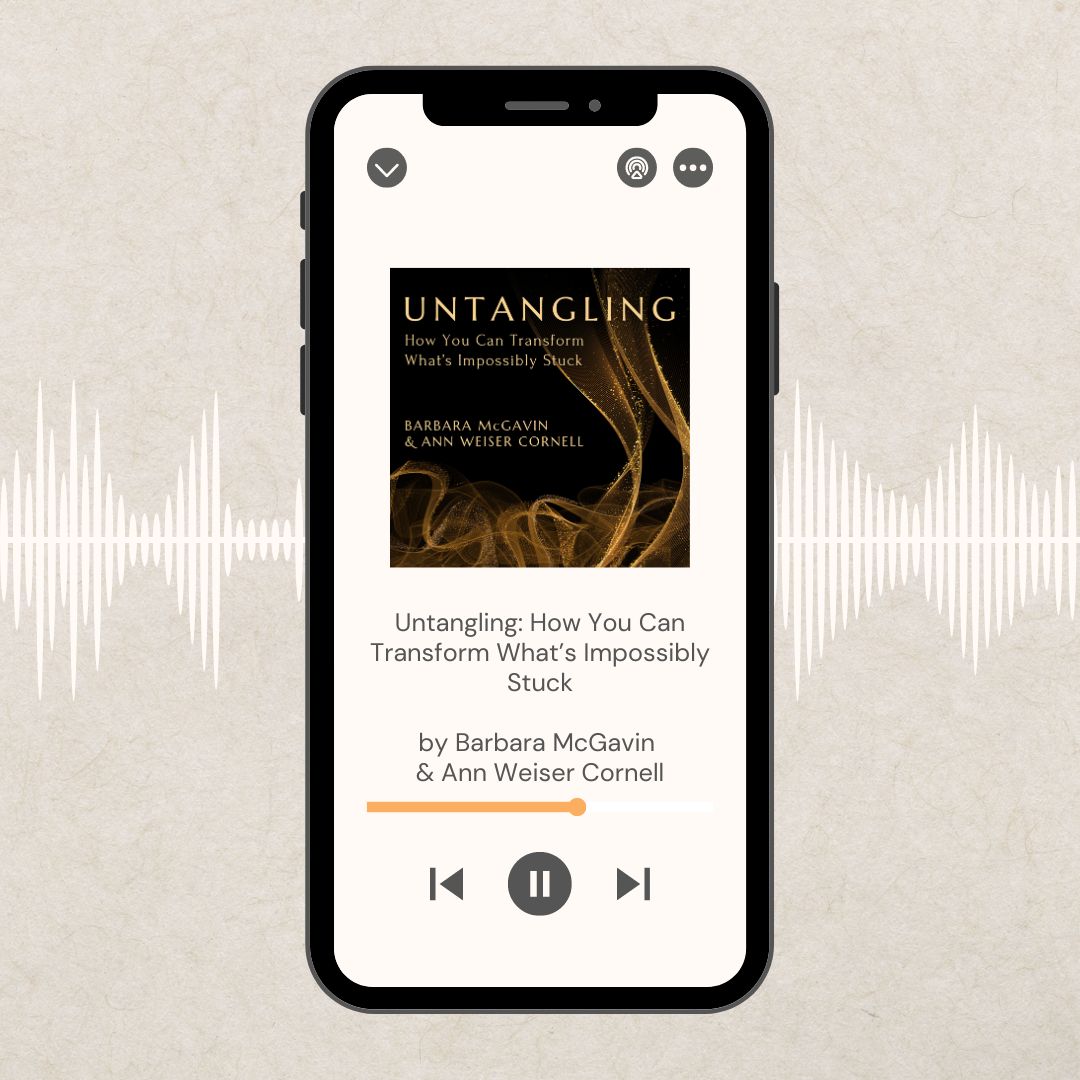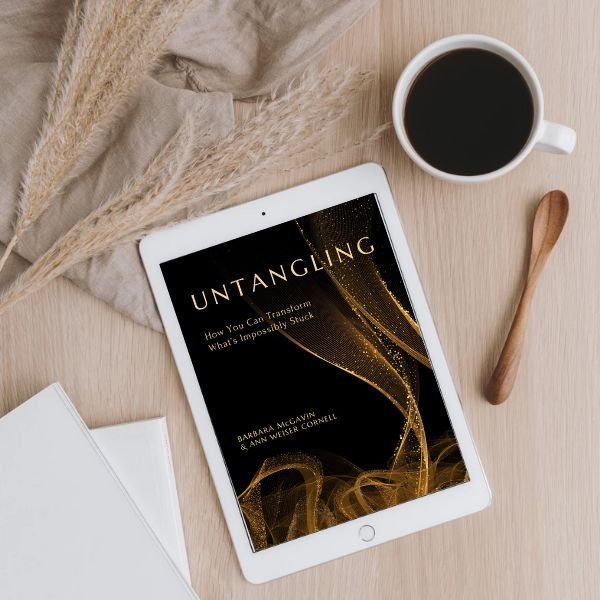Our Books & Manuals
Our books and manuals are great tools to help support you on your journey to self-acceptance. Whether you’re looking for ways to love yourself more or to support others in a professional capacity, we have something for you.
Click here for information about quantity discounts and bookstore ordering, and also for our money-back guarantee.
Our Books & Manuals
Our books and manuals are great tools to help support you on your journey to self-acceptance. Whether you’re looking for ways to love yourself more or to support others in a professional capacity, we have something for you.
Click here for information about quantity discounts and bookstore ordering, and also for our money-back guarantee.
Untangling – How You Can Transform What’s Impossibly Stuck
by Barbara McGavin & Ann Weiser Cornell
Paperback | eBook | Audiobook
Also available: Audio Explorations + Workbook (PDF)
Are there problems in your life that seem like they’ll never change? It turns out being stuck is not an endpoint, it’s a clue.
Based on 30 years of teaching, practice, and exploration, Untangling shows you how to create the environment in which impasse can transform into flow.
Helps with: stress | overwhelming feelings | emotional overwhelm | inner critic | tuning in to your body’s wisdom | healing emotional pain from the past | shame | increasing self-compassion | making decisions | Untangling®
The Thriving As Your Authentic Self Series
The Gifts in Aging
by Ann Weiser Cornell
Paperback | ebook
Aging is one of the most natural things in the world, yet many of us worry about what it will bring. If you want to face the changes of aging with confidence, draw strength from your life experiences, and discover the hidden gifts of this stage of life, this book can help.
Helps with: aging | overwhelming feelings | emotional overwhelm | tuning in to your body’s wisdom | increasing self-compassion | making decisions
21 Days to Better Boundaries
by Ann Weiser Cornell
Paperback | eBook | Audiobook
Also available: Guided Audio Exercises
If you want a straightforward, step-by-step process you can use to be empowered setting your boundaries, to feel less guilt, frustration, or fear, then 21 Days to Better Boundaries is for you. With this book, you’ll learn to identify healthy boundaries and develop the skills to set them with kindness and clarity.
Helps with: tuning in to your body’s wisdom | relationships | healing emotional pain from the past | Focusing in daily life | healthy boundaries
Focusing in Clinical Practice: The Essence of Change
by Ann Weiser Cornell
Hardcover Book | eBook
Ann Weiser Cornell shows step by step how to bring Focusing into any kind of clinical practice.
Designed to be immediately useful to working clinicians, this book shows how to help clients get and nurture felt senses, how to work with clients who have difficulty feeling in the body, and more.
Helps with: healing emotional pain from the past | professional development and Focusing | Focusing and psychotherapy
Presence: A Guide to Transforming Your Most Challenging Emotions
by Ann Weiser Cornell
ebook
Also available: Workbook + Guided Exercises
If you’ve suffered through shame, anger, depression, self-criticism, relationship issues, or avoidance to taking action in your life, let Presence serve as your guide to a different way of being with yourself and all of your feelings.
Helps with: stress | overwhelming feelings | emotional overwhelm | inner critic | tuning in to your body’s wisdom | healing emotional pain from the past | shame | increasing self-compassion | making decisions
The Radical Acceptance of Everything: Living A Focusing Life
by Ann Weiser Cornell
Paperback | eBook | Audiobook
A book that identifies some of the ways we get lost in inner wars and how we can cultivate radical self-acceptance to bring peace to the places that ache inside.
Accessible to both the seeker of personal change and the professional who wants to be more effective working with others.
Helps with: stress | overwhelming feelings | emotional overwhelm | inner critic | tuning in to your body’s wisdom | increasing self-compassion | Focusing partnership | Untangling | healing emotional pain from the past | Focusing in daily life | professional development and Focusing | Focusing and psychotherapy
The Power of Focusing: A Practical Guide to Emotional Self-Healing
by Ann Weiser Cornell
Paperback
Great for beginners.
Focusing is a gentle yet powerful skill that lets you tap into your body’s wisdom and make positive changes in your life. The Power of Focusing shows readers how they can train themselves to learn this vital technique of self-exploration and self-discovery.
Helps with: tuning in to your body’s wisdom | Focusing partnership | increasing self-compassion | blocks to action | making decisions | Focusing and psychotherapy
Our Manuals
The Focusing Student’s & Companion’s Manual, Part One
by Ann Weiser Cornell & Barbara McGavin
Spiral-bound | Digital (PDF)
This extensive, in-depth manual offers support for learning Focusing and Focusing partnership.
The Focusing Student’s and Companion’s Manual Part One is designed to accompany introductory Focusing courses such as Focusing Level One, Focusing Level Two, or “Path Part One” (IRF Part One).
Helps with: tuning in to your body’s wisdom | increasing self-compassion | Focusing partnership
The Focusing Student’s & Companion’s Manual, Part Two
by Ann Weiser Cornell & Barbara McGavin
Spiral-bound | Digital (PDF)
Part Two of our popular manual goes deeper into Focusing and being a Companion, exploring some of the more subtle and challenging aspects of the process.
The Focusing Student’s and Companion’s Manual Part Two is designed to accompany intermediate Focusing courses such as Focusing Level Three, Focusing Level Four, or “Path Part Two” (IRF Part Two).
Helps with: tuning in to your body’s wisdom | increasing self-compassion | Focusing partnership
The Focusing Teacher’s Manual
by Ann Weiser Cornell
Digital (PDF)
The Focusing Teacher’s Manual is written for advanced Focusing Certification trainees and is available to you as well.
It contains detailed and in-depth guidance on creating a practice as a Focusing professional, offering one-to-one Focusing sessions, teaching Focusing to groups, and communicating about Focusing to people who are prospective students and clients.
Helps with: professional development and Focusing
Ann’s Recommended Books by Other Authors
I’m excited about sharing with you some of my favorite, most highly recommended Focusing books.
We don’t sell these books in our web store. If you click the links you’ll be taken to Amazon. Or how about ordering them from your local independent bookstore!
Helpful Information
Full Unconditional Money-Back Guarantee
We want you to be fully satisfied with all products and services purchased from Focusing Resources. You may return any purchase at any time for a full refund, no questions asked! If your merchandise was defective, no need to return it; just let us know, and we will replace it at no charge.
Order Information
Order Online
The easiest and fastest way to place an order for materials is online, using our secure shopping cart and your credit card. We accept VISA, MasterCard and American Express. Simply add items to your shopping cart as you browse this website, and check out when you are ready to place your order.
Please do not order by e-mail.
Shipping & Handling
Please Note: Shipping and handling does not apply to that part of your order which is sessions, workshops, retreats or phone classes.
Books and manuals incur a shipping/handling charge. This amount varies depending on the weight of your package and its destination. You can see your shipping options (USPS, UPS) and estimate your shipping charges in your shopping cart, before you place your order. (If you’re in the US and not in a rush to receive your order, you’ll also have the option to choose USPS Media Mail, which may cost significantly less that other methods.)
Sales Tax
Sales tax (CA residents only) is automatically calculated if you are purchasing physical materials via our website.
Sales tax does not apply to sessions, workshops, retreats, phone classes, or newsletter subscriptions. Currently, sales tax does not apply to digital products. Shipping & handling is also not taxable.
Quantity Discounts
Quantity discounts are available on bulk orders of The Focusing Student’s & Companion’s Manuals (English, hard-copy version only). Quantity orders of 5 or more of either manual are discounted as follows:
- 5-9 = (20% discount)
- 10+ = (40% discount)
Discounts are automatically calculated in the shopping cart.
For bulk order requests of Manuals de Focusing Para el Estudiante y el Compañero (3 or more of each), please email Micky Welsh: mickyw@sinectis.com.ar
Bookstore & Vendor Sales
Bookstores and vendors should order The Radical Acceptance of Everything from our distributor Baker & Taylor. To order by phone, call 1.800.775.1800 in the U.S. Online sales: www.btol.com/ts3/.
Please note: Bookstore and vendor orders placed directly with Focusing Resources are payable at the time of service (no invoicing or purchase order sales will be accepted).
No resale or quantity discounts apply to orders for The Radical Acceptance of Everything placed through Focusing Resources.



